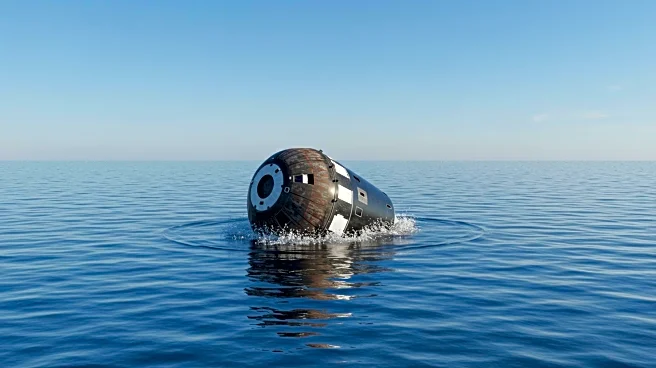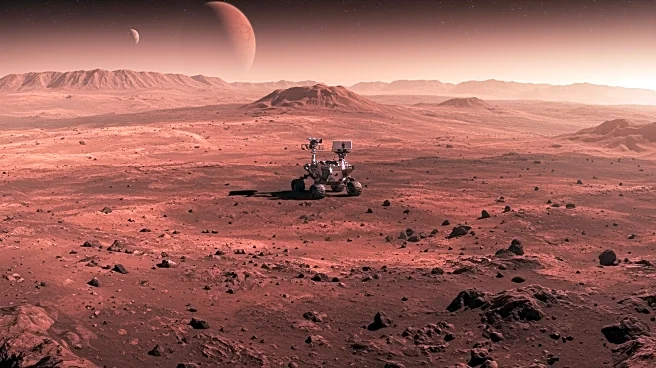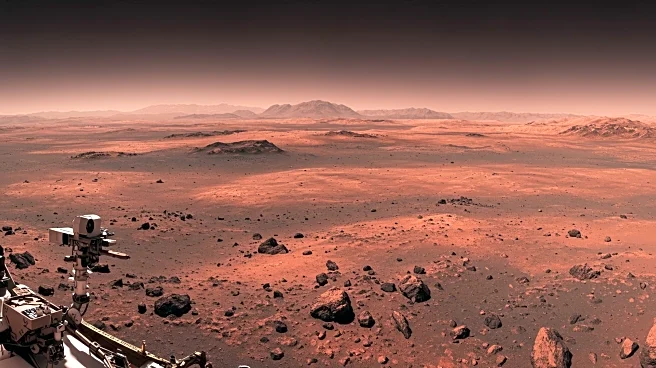What is the story about?
What's Happening?
NASA's Perseverance rover has captured an intriguing image of a rock on Mars that resembles a helmet, adding to its collection of curious finds. The rock, named Horneflya, features a pointed peak and a flared 'brim,' with textures formed by spherules. These formations are similar to those found on Earth, typically created through chemical weathering, mineral precipitation, or volcanic processes. The image was taken by the rover's Left Mastcam-Z camera on August 5 and was selected as the photo of the week for the rover's 234th week on Mars. The Perseverance rover is part of NASA's mission to search for signs of ancient microbial life and understand Mars' habitability, focusing on the Jezero Crater's 'wet history.'
Why It's Important?
The discovery of the helmet-like rock provides scientists with valuable insights into Mars' environmental history. Understanding the planet's past conditions is crucial for assessing its habitability and the potential for ancient microbial life. The Perseverance rover's findings contribute to the broader goal of paving the way for human exploration of Mars. This mission is part of NASA's Artemis program, which aims to establish a base of operations on the moon before sending humans to Mars. The research conducted by Perseverance is essential for future missions and could influence plans by private companies like SpaceX, which envisions launching uncrewed trips to Mars as early as 2028.
What's Next?
The Perseverance rover will continue its exploration of the Jezero Crater, searching for signs of ancient life in lakebed or shoreline sediments. The findings from this mission will inform NASA's future plans for human exploration of Mars, including the Artemis program's goal of establishing a lunar base. As the rover gathers more data, scientists will analyze the environmental history of Mars to better understand its potential for supporting life. The ongoing research may also impact private sector initiatives, such as SpaceX's plans for Mars exploration, by providing critical information about the planet's conditions.
Beyond the Headlines
The Perseverance rover's discoveries on Mars have broader implications for understanding planetary science and the potential for life beyond Earth. The study of spherule formations and other geological features on Mars can offer insights into similar processes on Earth, enhancing our knowledge of planetary evolution. Additionally, the mission highlights the importance of international collaboration in space exploration, as findings from Mars could influence global efforts to explore and potentially colonize other planets. The ethical considerations of such endeavors, including the preservation of extraterrestrial environments, will become increasingly relevant as technology advances.
AI Generated Content
Do you find this article useful?











